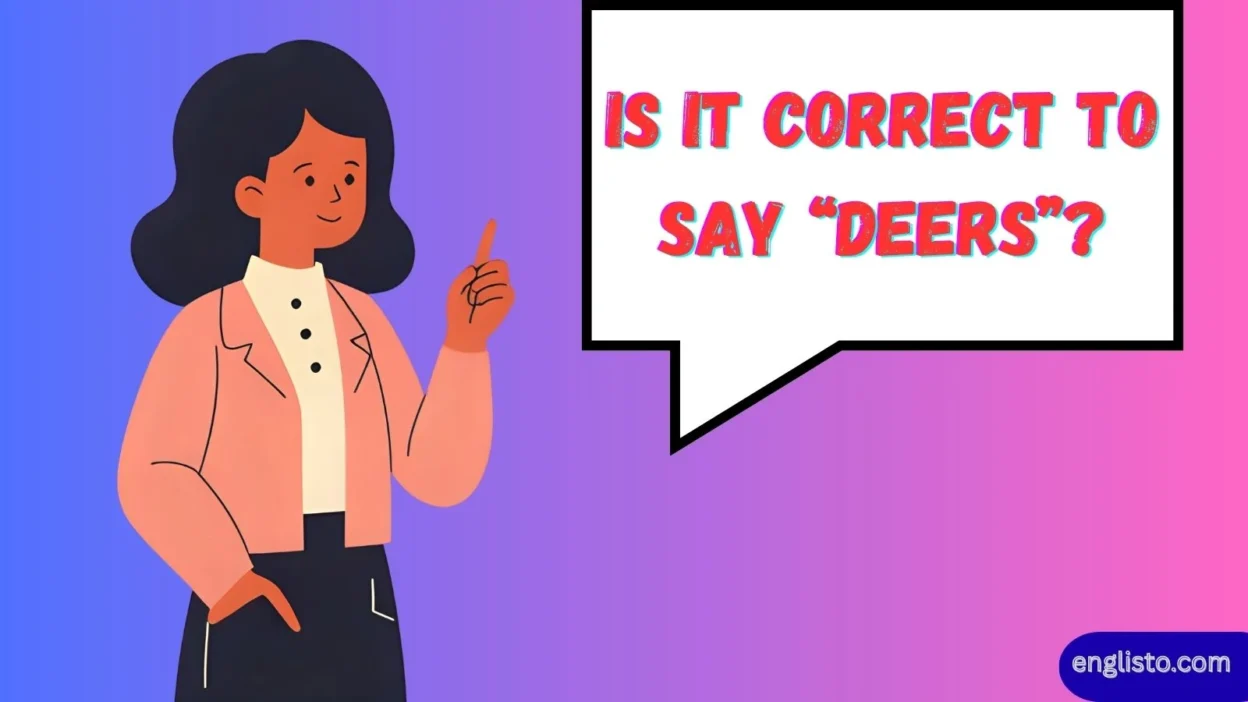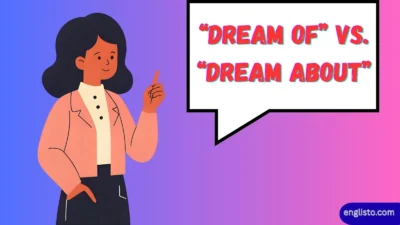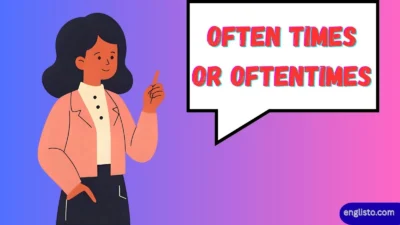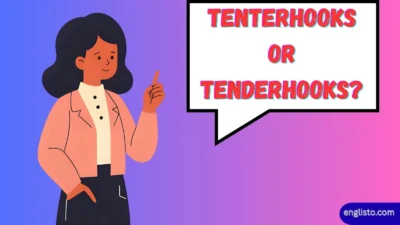Language is full of little twists that can confuse even the most confident speakers. One such puzzling question is: “Is it correct to say deers?” At first glance, adding an “-s” to make a plural seems logical. After all, we say cats, dogs, horses, and lions. So why not deers?
The answer isn’t as simple as “yes” or “no.” It depends on context, history, and even the way zoologists or everyday speakers use the word. This article dives deep into the subject, offering grammatical explanations, real-world examples, historical insights, and practical tips so you’ll never be confused again.
The Standard Rule: Why “Deer” Works as Both Singular and Plural
In standard English, deer is one of those irregular nouns whose singular and plural forms are identical.
- Singular: I saw a deer in the forest.
- Plural: I saw five deer in the forest.
This makes deer similar to other irregular nouns like:
| Singular | Plural |
| sheep | sheep |
| fish | fish (or fishes, in some contexts) |
| moose | moose |
| aircraft | aircraft |
So generally, it is incorrect to say deers in formal writing or everyday standard communication.
Read More: Built Like a Brick Outhouse – Idiom Explained
Why “Deers” Sounds Tempting (But Usually Wrong)
Many learners naturally assume that adding “-s” to form a plural is always correct. After all, it works for most English nouns. But words like deer, sheep, and fish are part of a special group: grammatical-number irregular animals.
In this group, the form doesn’t change, but the context tells us whether we’re talking about one or many.
Think of the sentence:
- “A hunter tracked one deer across the snow.”
- “Hunters tracked many deer across the same forest.”
Here, the word doesn’t change, but the meaning is clear.
When “Deers” Has Been Used Historically
Interestingly, deers has appeared in English literature and dialects. For example, in James Hogg’s Tales and Sketches (1817), the word deers shows up, used in a regional and poetic way. Early English texts sometimes experimented with forms before grammar was standardized.
However, modern dictionaries like the OED (Oxford English Dictionary) classify deers as nonstandard or obsolete. It might show up in folk expressions, dialects, or creative writing, but it isn’t considered correct in modern professional or academic contexts.
Comparing “Deer” with Other Irregular Plurals
Some irregular plurals follow no single logic. Let’s compare:
| Word | Singular | Plural | Notes |
| deer | deer | deer | Standard and universally accepted |
| sheep | sheep | sheep | Same form for both |
| fish | fish | fish / fishes | Fishes is used to refer to different species, e.g., “three fishes of the Amazon” |
| goose | goose | geese | Vowel change instead of adding “s” |
| tooth | tooth | teeth | Irregular vowel change |
| moose | moose | moose | Same as deer |
This table shows that English pluralization doesn’t always follow predictable rules. It’s part of what makes the language fascinating but also tricky.
Zoological and Species-Specific Usage
There is one rare case where deers could be used logically: when referring to different species of deer. For example, a zoologist comparing red deer, white-tailed deer, and muntjac might write:
“The park is home to several deers, including roe deer, fallow deer, and mule deer.”
Here, deers emphasizes distinct species, not just multiple animals. It works much like the distinction between fish (individuals of one species) and fishes (different species).
Still, this is not the preferred everyday usage. Most native speakers would simply say “species of deer.”
Examples of Correct and Incorrect Usage
| Sentence | Correct/Incorrect | Explanation |
| I saw three deers in the meadow. | ❌ Incorrect | Standard English doesn’t allow deers in this sense. |
| The national park preserves many deer. | ✅ Correct | Proper plural. |
| Biologists studied three deers: roe, fallow, and red. | ✅ Rare but acceptable | Refers to different species. |
| Hunters reported tracking several deer last winter. | ✅ Correct | Common plural. |
| He photographed a herd of deers. | ❌ Incorrect | Use herd of deer. |
Deer in Culture, Literature, and Everyday Life
The grammar of deer isn’t just academic—it shows up in stories, myths, and everyday conversations.
- Native American teams saw deer as symbols of intuition, gentleness, and connection to nature.
- In European nobility, the stag represented purity, wilderness, and prestige in hunting.
- In modern hunting reports, like the 2014 Michigan harvest statistics, officials counted deer populations without ever using deers.
Even in casual speech, people say things like:
- “I almost hit a deer on the road.”
- “There are deer tracks in the snow behind my house.”
Notice that deer stays the same in all cases.
Practical Tips to Avoid Mistakes
To make sure you never stumble when talking or writing about deer:
- Remember the rule: deer = both singular and plural.
- Think of sheep: If you’d never say sheeps, don’t say deers.
- Use species when needed: If you want to emphasize different kinds, say species of deer.
- Proofread carefully: Plurals like deers may slip into informal writing.
- Practice with examples: Fill-in-the-blank exercises can train your instincts.
Example:
- “Yesterday, I saw five ___ in the meadow.” → deer
- “The reserve protects several ___, including red and fallow.” → species of deer
Historical and Linguistic Background
The word deer comes from Old English “deor”, meaning “beast” or “animal.” In early usage, it wasn’t limited to the hoofed mammals we think of today. Over time, its meaning narrowed to the Cervidae family—white-tailed deer, roe deer, elk, moose, and caribou.
Other languages kept similar forms:
- Dutch: dier (animal)
- German: Tier (animal)
- Gothic: dius (wild creature)
Because of this history, the plural stayed unchanged, much like other inherited irregulars. It’s part of the natural evolution of English—shaped by Old English, Norse, French, and Latin influences.
Real-Life Grammar Check: How Native Speakers Use It
Corpus studies and modern usage reports show that:
- “deer” appears overwhelmingly as both singular and plural in newspapers, academic journals, and government reports.
- “deers” rarely shows up, and when it does, it’s either dialectal, poetic, or zoological.
So if you want to speak and write with clarity, stick to deer.
FAQs About “Deers”
Is it ever correct to say “deers”?
Yes, but only when referring to multiple species of deer in a zoological context. Otherwise, it’s considered incorrect.
Why doesn’t “deer” take an -s like other nouns?
Because it’s an irregular noun with historical roots in Old English. Its plural never developed an “-s.”
Do native speakers ever use “deers”?
Rarely. It may appear in dialects, old literature, or creative writing, but it’s not standard.
What’s the plural of other animals like sheep and fish?
Sheep → sheep. Fish → fish or fishes (when talking about species).
How can I remember this rule easily?
Link deer with sheep. If sheep doesn’t change in the plural, neither does deer.
Conclusion
So, is it correct to say deers? Generally, no. In standard English, the word deer serves as both singular and plural, just like sheep and moose. Using deers in most contexts will be seen as a grammatical mistake.
That said, there are rare exceptions—mainly when zoologists or biologists are referring to multiple species. In those cases, deers has a technical function. But for everyday speech, professional writing, or academic contexts, the safe and proper choice is always deer.
Mastering these little quirks of English not only helps you communicate clearly but also shows a strong command of the language. So next time you see a group of graceful creatures leaping through the woods, you’ll know exactly how to talk about them—without stumbling over the plural.



